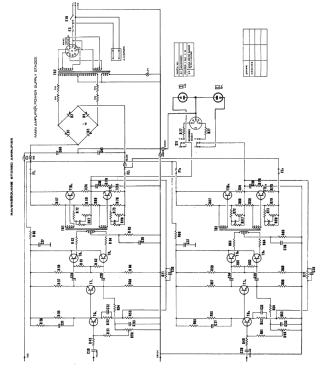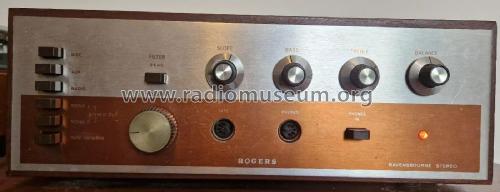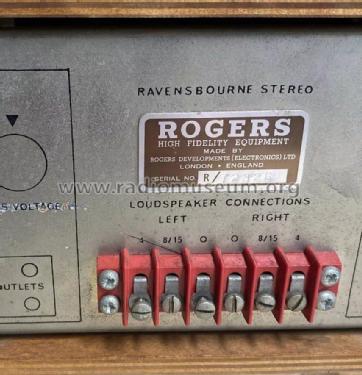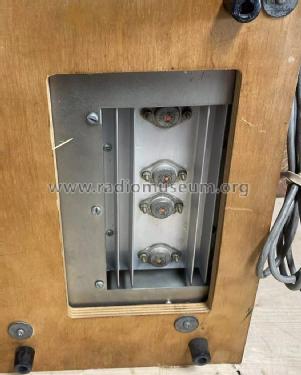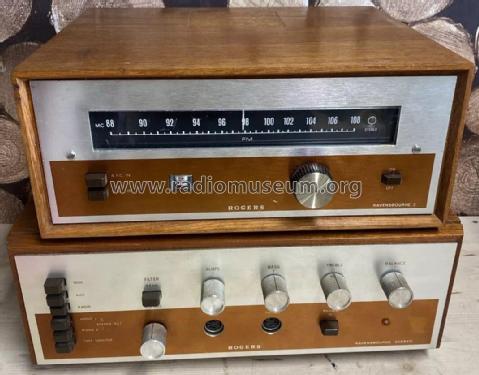Ravensbourne Stereo
Rogers, Catford (see also Rogers Birmingham)
- Pays
- Royaume Uni
- Fabricant / Marque
- Rogers, Catford (see also Rogers Birmingham)
- Année
- 1967 ?
- Catégorie
- Amplificateur BF ou mélangeur BF
- Radiomuseum.org ID
- 132226
Cliquez sur la vignette du schéma pour le demander en tant que document gratuit.
- No. de transistors
- 22
- Principe général
- Amplification audio
- Gammes d'ondes
- - sans
- Tension / type courant
- Alimentation Courant Alternatif (CA) / 110; 120; 220; 240 Volt
- Haut-parleur
- - Ce modèle nécessite des HP externes
- Matière
- Boitier métallique
- De Radiomuseum.org
- Modèle: Ravensbourne Stereo - Rogers, Catford see also
- Forme
- Chassis (pour intégration dans meuble)
- Remarques
-
The Rogers Ravensbourne Stereo was a significant transistorised amplifier introduced in 1967 by Rogers Developments.
Key features include:
- First transistor amplifier from Rogers, offering 25W per channel
- Used modern silicon transistors instead of tubes
- Priced at £64, between the HG88 tube amp (£46) and Master pre/power (£90)
- Employed 2N3055 transistors, like other high-end amps of the era
- Claimed low distortion and noise, excellent transient response
- Connector for auxiliary external PreAmp for Tape Head / Microphone / 2nd Pick-up.
It was only produced in one version, unlike the later Ravensbrook model
Updated in 1973 with DIN speaker connectors and a higher 35W rating. Details here.
The Ravensbourne represented Rogers' transition to transistor technology, offering increased power and performance over their tube designs in a similarly styled package. Its transformer-coupled output stage was an innovative approach, though it introduced some complexity in setup and maintenance.
Only one channel is listed in the transistor lineup.
- Source
- - - Manufacturers Literature
- Littérature
- -- Original prospect or advert (Tape Recording UK Feb 1968, Page 87.)
- Schémathèque (1)
- -- Original prospect or advert (HiFi New, Review: Tim Jarman, Lab: Paul Miller | May 30, 2024)
- Auteur
- Modèle crée par Gottfried Silberhorn. Voir les propositions de modification pour les contributeurs supplémentaires.
- D'autres Modèles
-
Vous pourrez trouver sous ce lien 46 modèles d'appareils, 45 avec des images et 6 avec des schémas.
Tous les appareils de Rogers, Catford (see also Rogers Birmingham)
Musées
Le modèle Ravensbourne Stereo peut être vu dans les musées suivants.

